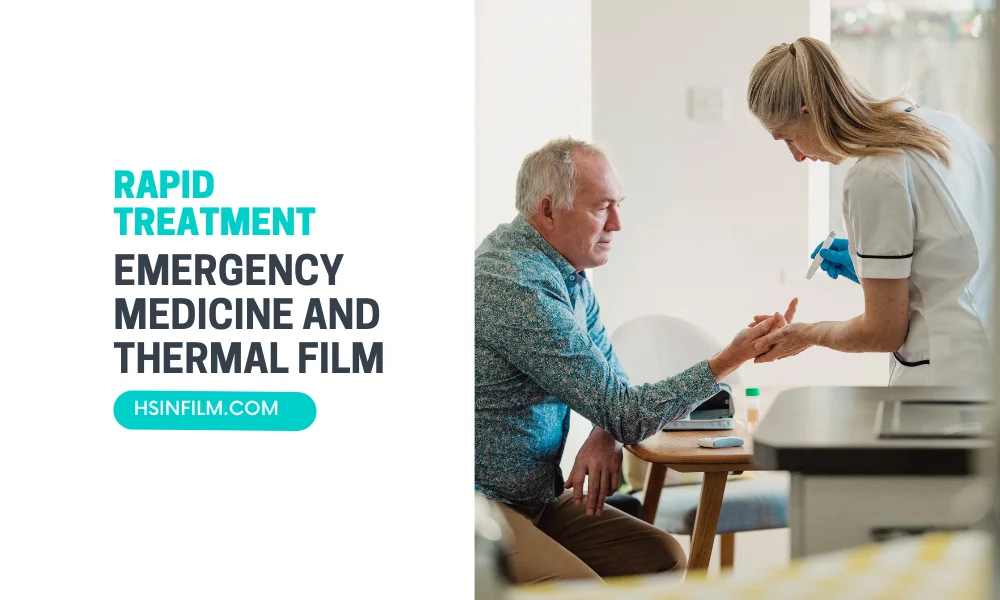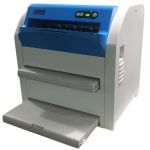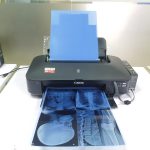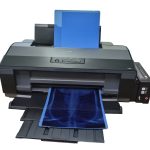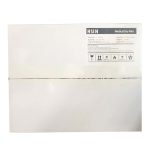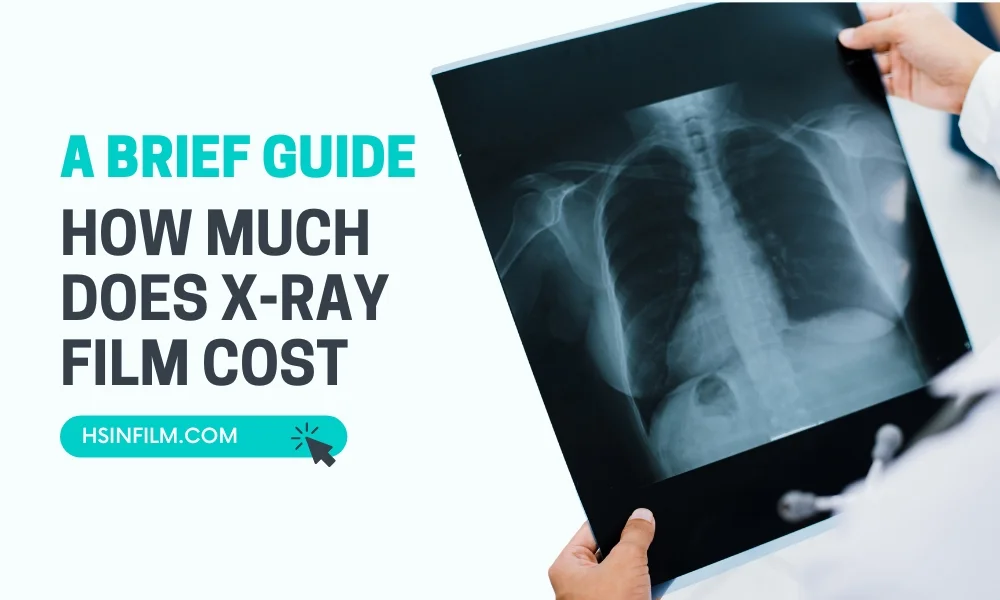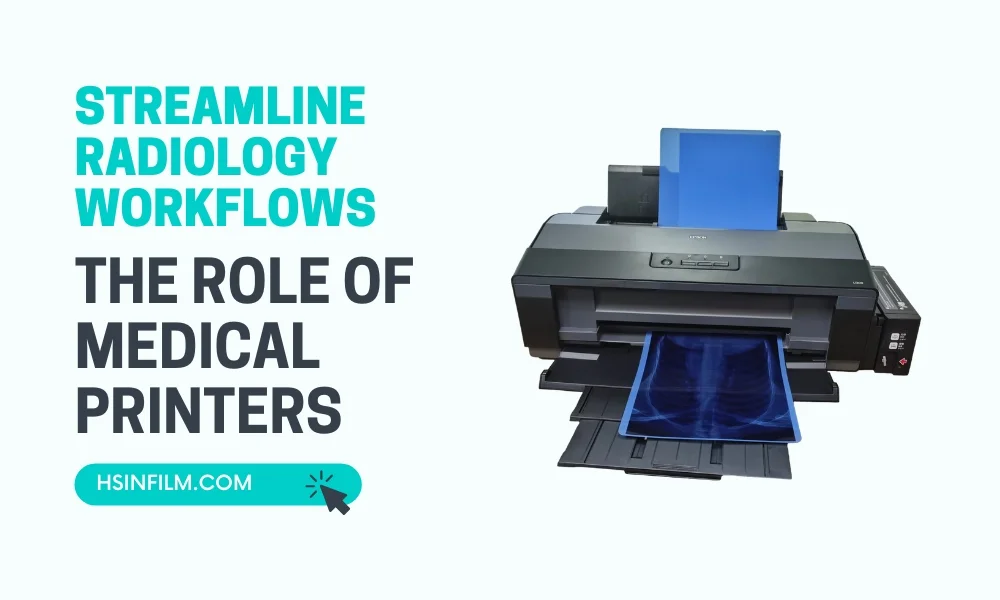In emergency medicine, every second counts. When a patient arrives in critical condition, healthcare providers must make quick and accurate decisions to save lives. One of the essential tools in this process is rapid imaging, and thermal film plays a crucial role in delivering fast, reliable results. This blog post explores the significance of thermal film in emergency medicine, highlighting its impact on patient care, diagnostic accuracy, and overall efficiency in critical care settings.
Table of Contents: Emergency Medicine and Thermal Film
Understanding Thermal Film in Medical Imaging
What is Thermal Film?
Thermal film is a type of imaging film used in medical settings to produce high-quality diagnostic images. Unlike traditional X-ray film that requires chemical processing, thermal film is developed using heat. This process is faster and more environmentally friendly, making it ideal for use in fast-paced environments like emergency rooms.
How Does Thermal Film Work?
Thermal film works by using heat to develop images from various medical imaging devices, such as X-ray machines, CT scanners, and MRI machines. The film is exposed to the imaging data, and the heat activates the image development process. The result is a clear, high-resolution image that can be used immediately for diagnosis and treatment planning.
The Role of Thermal Film in Emergency Medicine

Speed and Efficiency in Critical Situations
In emergency medicine, time is of the essence. When a patient arrives with a life-threatening condition, doctors and nurses need to act quickly. Thermal film provides rapid imaging capabilities, allowing healthcare providers to obtain diagnostic images in a matter of minutes. This speed is crucial in emergencies, where every second can make a difference in the outcome.
Immediate Availability of Images
One of the significant advantages of thermal film is the immediate availability of images. Unlike traditional film, which requires time-consuming chemical processing, thermal film can be developed and viewed almost instantly. This immediate availability allows doctors to make quick decisions about treatment, reducing delays and improving patient outcomes.
Reducing Patient Wait Times
Thermal film also plays a role in reducing patient wait times in the emergency room. In a busy ER, long wait times can be dangerous for patients in critical condition. By using thermal film for imaging, hospitals can streamline the diagnostic process, ensuring that patients receive the care they need without unnecessary delays.
Introduction to Thermal Film Imaging
The Usain Bolt of Imaging
Medical Thermal Film Imaging is like the Usain Bolt of the imaging world, delivering results in a flash. Picture a high-speed camera, but instead of photographs, it captures high-resolution medical images using a thermal process. This technology utilizes heat-sensitive paper that reacts to the heat emitted by the body, creating detailed images that can be examined right away.
Swift and Immediate Results
This process ensures that medical professionals can quickly assess a patient’s condition, make crucial decisions, and initiate treatment without delay.
Diagnostic Accuracy with Thermal Film
High-Resolution Images for Precise Diagnosis
In emergency medicine, accurate diagnosis is essential. Thermal film provides high-resolution images that help doctors identify injuries, abnormalities, and other critical conditions with precision. Whether it’s a broken bone, internal bleeding, or a severe infection, thermal film ensures that the diagnostic images are clear and detailed, enabling doctors to make informed decisions quickly.
Consistency Across Multiple Imaging Devices
Thermal film is compatible with various imaging devices, including X-rays, CT scans, and MRIs. This compatibility ensures consistency in image quality across different diagnostic tools, providing a reliable basis for comparison and analysis. In an emergency setting, where multiple imaging modalities may be used, this consistency is vital for accurate diagnosis and treatment planning.
Enhancing Collaboration Among Medical Teams
Clear and consistent images produced by thermal film also enhance collaboration among medical teams. In a critical care environment, different specialists, such as radiologists, surgeons, and emergency physicians, may need to review and discuss the same images. Thermal film’s high-quality output ensures that all team members have access to the same detailed information, facilitating effective communication and coordinated care.
Benefits of Thermal Film in Emergency Medicine
Speed: A Pivotal Asset
The benefits of thermal film in emergency medicine are nothing short of remarkable. Its speed is its most prominent asset, as it produces images within seconds. In a critical situation, these seconds can make all the difference, guiding doctors in their life-saving efforts.
High-Quality Images
Additionally, thermal film images are of exceptional quality. They provide a level of detail that rivals traditional X-rays, helping doctors make accurate diagnoses.
Environmental and Economic Benefits of Thermal Film
Reducing Chemical Waste
Traditional X-ray film requires the use of chemicals for processing, which can contribute to environmental pollution. Thermal film, on the other hand, eliminates the need for these chemicals, reducing the environmental impact of medical imaging. In an era where sustainability is increasingly important, the use of thermal film represents a responsible choice for healthcare facilities.
Cost-Effective Imaging Solution
In addition to its environmental benefits, thermal film is also cost-effective. The elimination of chemical processing reduces both material costs and the expenses associated with hazardous waste disposal. Furthermore, the speed and efficiency of thermal film contribute to overall cost savings by reducing the time and resources needed for imaging and diagnosis.
Long-Term Durability and Storage
Thermal film is designed to be durable and resistant to environmental factors such as light and humidity. This durability ensures that images can be stored long-term without degradation, making them accessible for future reference. In emergency medicine, where patient records may need to be reviewed or transferred between facilities, the ability to store and retrieve high-quality images is essential.
Applications of Thermal Film in Emergency Medicine
Trauma Cases
In trauma cases, where patients may have multiple injuries, rapid and accurate imaging is critical. Thermal film is often used to produce X-rays and CT scans that help doctors assess the extent of the injuries and plan appropriate treatment. The ability to quickly obtain clear images of fractures, internal bleeding, and organ damage can be lifesaving.
Cardiac Emergencies
Thermal film is also valuable in cardiac emergencies. For patients experiencing chest pain, shortness of breath, or other symptoms of a heart attack, quick imaging is necessary to diagnose the problem and initiate treatment. Thermal film allows for the rapid production of images from diagnostic tests such as chest X-rays or cardiac CT scans, helping doctors determine the best course of action.
Stroke Diagnosis
When a patient is suspected of having a stroke, time is of the essence. Immediate imaging is required to determine the type and location of the stroke, guiding treatment decisions. Thermal film’s rapid development process ensures that images are available quickly, allowing doctors to administer clot-busting drugs or perform other interventions as needed.
Emergency Surgery Preparation
For patients who require emergency surgery, thermal film plays a critical role in the preparation process. Surgeons rely on clear, detailed images to plan the procedure, assess risks, and make decisions about the best surgical approach. Thermal film’s ability to provide high-quality images in a short amount of time ensures that surgeries can proceed without unnecessary delays.
Comparison with Other Imaging Methods
Evaluating Imaging Options
In the world of medical imaging, choices abound. However, not all methods are equally suited for the high-pressure environment of emergency medicine. Let’s take a moment to compare thermal film imaging with other diagnostic tools commonly used in emergency care.
Thermal Film vs. Traditional X-rays
Consider traditional X-rays. While they are valuable, they require more time for processing and involve exposure to ionizing radiation. In contrast, thermal film imaging offers speed and safety, making it ideal for emergency situations.
Thermal Film vs. MRI and CT Scans
MRI and CT scans are incredibly detailed but take precious time to perform, which may not be feasible in critical moments.
In essence, thermal film is the sprinter, delivering rapid results when seconds matter most.
Implementation and Training
Integrating Thermal Film Technology
Implementing thermal film technology in emergency departments requires not just the equipment but also proper training. Medical professionals must be proficient in using thermal film cameras, interpreting the images, and integrating this tool seamlessly into their workflow. Regular maintenance is essential to ensure the equipment’s reliability.
Conclusion
In emergency medicine, the ability to quickly and accurately diagnose a patient’s condition is crucial. Thermal film has become an indispensable tool in this process, offering rapid imaging capabilities that enhance patient care, reduce wait times, and improve diagnostic accuracy. Its environmental and economic benefits further solidify its role as a valuable resource in modern healthcare.
As technology continues to advance, the future of thermal film in emergency medicine looks promising. With ongoing improvements in resolution, processing speed, and digital integration, thermal film will continue to play a vital role in critical care, helping healthcare providers save lives and deliver the highest quality of care.
By understanding the advantages of emergency medicine and thermal film, healthcare providers can make informed decisions about incorporating this technology into their practice, ultimately enhancing patient care and outcomes in emergency settings.
Additional Resources
In this blog post, we’ve explored the pivotal role of thermal film and emergency medicine, uncovering its speed, precision, and life-saving potential. As we embrace the future of medical technology, thermal film imaging stands as a beacon of hope in the critical care landscape, ensuring that healthcare professionals have the tools they need to save lives when time is of the essence.
